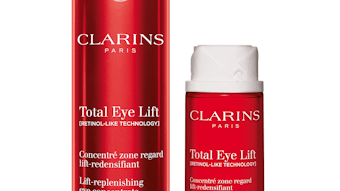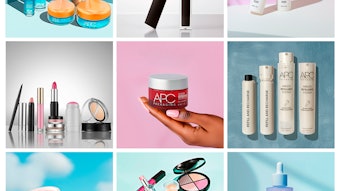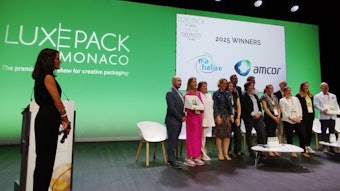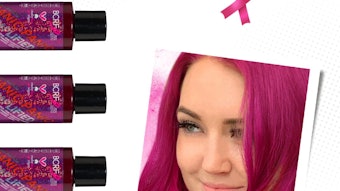- Packaging is a critical brand touch point, meaning the strategic design and development of a product’s packaging elements is essential to smart brand growth.
- Package design exists within a landscape. It has a context within your brand and your other products.
- Being on the cutting edge of packaging design requires an eye to consumer macrotrends, as well as the ability to understand how these macrotrends are applicable to your brand and products.
What’s your favorite package design? Is it the smart curvature of the closure on your go-to eau de parfum? The rough-hewn chunkiness of that single-batch bourbon bottle or the luscious lines of a sleek BMW? Maybe it’s the shape of the bottle of soda pop sitting on your desk right now?
Whatever it may be, beauty brand owners know packaging design trends and brand building are inextricably linked. Savvy brand owners carefully monitor trends within the industry and track the best examples of packaging design throughout the world of consumer products to help deliver the best packaging results to their brand, as well.
Packaging delivers remarkable ROI. It represents a critical brand touch point, the first thing a consumer physically interacts with in a brand experience. When package design trends are set, they stand at the crossroads of cultural anthropology, chemistry, engineering and commerce. And learning to anticipate these trends ensures the future vibrancy and poignancy of your beauty brand.
Influences on Design
This is critical: Your package design exists in a landscape. It can’t be different for the sake of being different. It has to be true to the brand proposition. Styles come and go, but setting the pace for new package designs means a steady strengthening of your core brand essence. This is accomplished through a manipulation of the package’s shape and material, graphic and copy elements, tactile attributes and even the sounds it makes.
There are a number of societal, demographic and economic trends impacting packaging design within the beauty industry, and those intent on being on the edge of new trends would do well to monitor these overarching trends.
- A desire to be unique—This is evidenced in the beauty industry by package advances such as new spray offerings.
- Health and well-being—Note the rise in natural skin care products, concerns over product safety and, to an extent, the ever-growing green movement.
- Value orientation—This is perhaps best displayed in beauty by the increase in popularity of mini products.
- Nomadism—On-the-go lifestyles require smaller, more easily transportable products.
- Premiumization—-This trend is highlighted by the rapid acceptance of quality pack componentry and design in prestige, masstige and now even mass products.
- Aging of the worldwide population—This megatrend will spur the development of easy-to-hold-, easy-to-open, easy-to-close and easy-to-read products. Indeed, the graying, yet active baby boomers will cause the 60+ category to increase dramatically in the U.S. and Europe, changing the very notion of aging.
- Sustainability—Continually look to new sustainable materials, recyclability and more eco opportunities. Sustainability is becoming the new normal, not just an added feature. Further, sustainability intersects with not just the health and well-being trend but also the trend toward premiumization. New performance-enhancing technology, materials and fresh supply chain thinking will help bake sustainability into the cake. An excellent example is Coca-Cola’s PlantBottle, the recyclable PET plastic package, which is made partially from plants. [Read more about sustainabilty, packaging and Coca-Cola’s launch of a 100% sugarcane-based high density polyethylene (HDPE) bottle in "Sustainability Drives Game Changing Innovation in Beauty."]
A Wide World
Today’s consumer product landscape includes a broad spectrum of box-busting product packaging approaches, all designed to help build brands and win on-shelf attention.
A variety of notable examples are available. Take beer. Consumers can now delight in cans featuring thermochromic ink that turns blue at the ideal drinking temperature. And air care products are no longer dull parity products to be hidden away when company comes by, but are designed to be sleek, modern and a finishing touch to well-appointed homes. Artisanal foods and beverages offer packaging that doubles as works of art, and Apple product design is consistently looked to as iconic packaging that communicates the company’s core principles of “smart, sophisticated and stylish.” Even something as everyday as soda makes an impact with the powerful design for Dr. Pepper/7Up’s core four 20-ounce splash bottles, from R&D/Leverage. The bottles are eye-catching on the shelf, run efficiently on a filling line, work well in vending machines, and speak to consumers about the message of the brand—refreshment, fun and enjoyment.
In the beauty industry, one example comes from Israeli company Faran Cosmetic, the eco-friendly maker of the Nature Scent skin and beauty products, which specifies 100% recyclable all-plastic lotion dispensers from Mega Airless. This results in both optimal formula protection and the reinforcement of the brand’s core characteristics through its airless dispensing solutions. Another example is Method Foaming Hand Soap, whose package—designed by Karim Rashid—is classic, clean and makes a statement without screaming, and the golden, miniature version of the Kiss Kiss lipstick from Guerlain takes consumers back to a time of elegance, sophistication and exclusivity. This example, in packaging from Rexam, displays an intersection of art and commerce—and an excellent example of premiumization.
Setting Trends
The best package designs are works of art, as they excite retailers, attract consumers and build your brand. But how to get to that level?
Finding the holy grail of trendsetting packaging requires an innovation mindset. Ask yourself: from the C-suite to the rank-and-file, does your company scour the world of consumer products, art, nature and beyond for inspiration? Does it welcome vision and contributions from across the organization?
It is imperative to encourage the creative spark that ignites broader thinking and inspiration. Sustainable inspiration is vital to the continued growth of your company and your brand, but you must first identify its source within your organization and channel and nurture that wellspring.
Further, the development of trendsetting packaging designs requires a finger on the pulse of popular culture, an ability to anticipate consumer tastes and a complete understanding of your brand’s core values.
A Look Into the Crystal Ball
To get a jump on leading package designs for beauty industry offerings, inspiration can come from all sides, but focus in on what your brand needs and speaks to. That may include some of the following trending industry-related issues.
Kid-friendly products. Youths without a line on their faces are already concerned about their skin. They are well-informed and have disposable income. To address this market, look for bright, colorful, textured package design elements in products targeting a younger demographic. Already evident in jewelry and mobile phone accessories, embellishments of the pack design enhance the link with fashion, as well as distinguish the product. For example, new mascara applicators with bold shapes and textures that completely shatter old-school thinking exemplify this.
Premiumization pressure. As prestige package design elements find their way into mass product use, prestige brands must continually raise the bar on innovation. Added convenience, enhanced functionality and attention to detail will continue to rule the day. The smoothness of a lipstick mechanism, the quality of a closing click feature or of the aerosol effect—this type of feature is more critical than ever. The appeal of the prestige product rests within the notion of the dream, the escape, the magic, which then prompts a purchase decision.
Rise of mini products. Smaller package sizes and mini products can both introduce consumers to a brand and facilitate greater sampling. Today’s mini products are powerful brand ambassadors—perfect replicas of the retail product with careful design and decoration.
Nomad products. There is a veritable arsenal of products within the purse of every woman, and these consumers are on-the-go and looking to freshen their appearance throughout the day. How does this play out in the marketplace? One example is the growing popularity of dry shampoos in smaller sizes, made possible by powder valve technology. Thanks to the volumizing effect of these dry shampoos, a quick styling before heading out with friends after work can now be easy and fun.
Product convergence. Think about package design in the context of today’s blurred new product categories. Cosmetic formulations are evolving to become more active, such as color cosmetics that boast anti-aging properties, sun protection and/or moisturizing. As formulations become more complex, they will continue to require more advanced package design and technologies.
Innovative developments. New material and technology developments come from all sides all the time. For example, in the newest generation of aerosols, bag-on-valve (BOV) technology holds tremendous promise. In BOV, a pressurization agent (typically air or nitrogen) surrounds a product-filled pouch. Depress the actuator, and the air presses against the pouch to dispense the product. Watch for this technology in hair care and shaving products, as well as soaps, deodorants and more.
Conclusions
In the beauty industry, brand owners and packagers strive to set the packaging design trends that build brands and sell products by delighting consumers. Beauty products have just a few precious seconds to capture the consumer’s attention at the point of sale, and to make a connection, the packaging has to make an impact. Then, the product also has to prove itself effective and be able to provide a lift to the consumer for every day after.
Differentiation is what makes an impact and builds brands. Strong brands soften the impact in times of economic uncertainty and help accelerate growth in times of greater prosperity. Thankfully, after years of extreme thrift, consumers are now cautiously looking for more small daily indulgences. Hopefully, this trend will continue unabated as consumers seek out and purchase more of tomorrow’s imaginatively designed beauty products to lift their mood—and strengthen brands.
Robert F. Brands is president—the Americas, of Lindal Group, a worldwide leader in the design, manufacture and sale of valves, actuators and spray caps used in aerosol products. In his career, Brands has led worldwide teams responsible for marketing and sales, operations and R&D for a wide range of personal care and consumer product companies.









